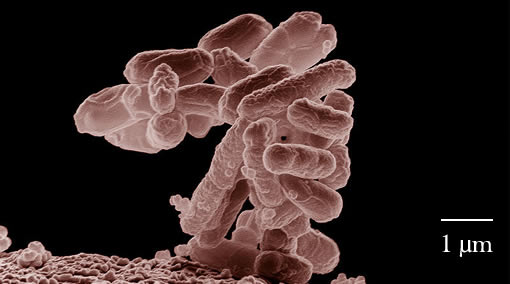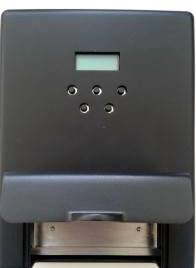 Low-temperature electron micrograph of a cluster of E. coli bacteria, magnified 10,000 times
Low-temperature electron micrograph of a cluster of E. coli bacteria, magnified 10,000 times
(Photo: ARS Image Gallery Image Number K11077-1 [Public domain], via Wikimedia Commons)
UoB Research Team Lead: Professor Tim Dafforn
Duration:August 2013 to February 2014
BBSRC Follow-on Funding Award:£24,748
Introduction
In 2011, an outbreak of Escherichia coli (E.Coli) disease in Germany claimed the lives of 53 people. It also resulted in an export ban on Spanish produce which subsequently cost the Spanish food industry $200 million per/week (est.). The cause of the outbreak was eventually traced to sprouts grown in Germany from seeds sourced in Egypt.1
The German example evidences vulnerabilities in food safety systems that can be exploited by contagion with devastating effect. These have the potential to become more severe as our dependence on complex, globalised food chains continue.
Research objectives - what was the challenge?
To reduce the likelihood of foodbourne outbreaks, there is an urgent need to rapidly detect diseases within food prior to its consumption.
In the original Star Trek TV series, the Tricorder allowed Dr McCoy to diagnose illnesses affecting the crew by waiving the device over the patient.
Now, a team of Scientists from the University of Birmingham is leading the emerging field of synthetic biological research to bring the tricorder a step closer to reality with an initial focus on food safety.
Research outputs - what was the process?

The "Tricorder"
The Team worked in partnership with Linear Diagnostics Ltd to develop a device that detects the presence of E-Coli from a small sample within minutes.
At the heart of the device lie bacteriophages. Bacteriophages are long, thin “spaghetti like” viruses that can be developed to carry antibodies that attack E-Colibacteria.
When placed in a solution, the bacteriophages line up perfectly. However, as soon as E-Coli bacteria are present they separate and tangle allowing light to pass through them. Once the light passes through the sample an electrical signal is generated that is displayed as a set of numbers on a computer screen. This alerts the reader to the presence of the disease within the sample allowing for the food to be destroyed safely.
In the video below, Professor Tim Dafforn describes, in 60 seconds the theory behind his research on the tricorder.
Video transcript
Research impact
- Thus far, Birmingham’s Team has concentrated on developing the device to detect Escherichia coli(E.coli) O157; a strain of the stomach bug that causes serious infections.
- With further investment, the device is being developed to become hand held in size and have the ability to detect other types of foodbourne disease.
- Notably, the device could also support Human Security in future by being modified to detect strains of deadly agents such as Anthrax to help prevent biological attacks.
Other outcomes:
The project has also resulted in:
- Supporting the lead academic to become selected as one of the Government’s Entrepreneurs in Residence.
- The lead academic discussing the development of the device on Stephen Hawkin’s “Brave New World” TV programme.
- The Post-Doctoral Research Assistant who is working on the development of the device developing expertise within instrument manufacture.
Learn More
Learn more about Professor Tim Dafforn
1E. colioutbreak O104